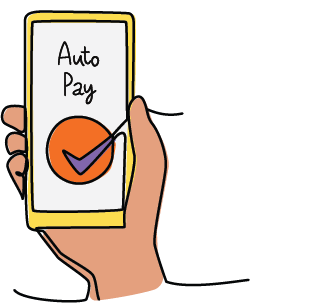-
A micro-generation customer owns a device that converts energy from one form into electrical energy. This could be any renewable energy, most often being solar in Alberta.
Did you know that Albertans are permitted to generate their own electricity from renewable or alternative energy sources for their property? You can be either a Small Micro-Generator or a Large Micro-Generator. Once you exceed 5,000 kW capacity or intend to earn revenue from the electric power generated, you are considered a commercial-sized generator.
There are tons of benefits to generating your own energy. Producing your own power will offset some of the energy your property needs to draw from the grid, resulting in a lower bill and more money in your pocket. Plus, by choosing to generate from a renewable source, your micro-generator will help protect the environment.
-
Pay your bill
Please verify your service location to access this:
-
Sign up for fixed rates: 1-855-452-8869Direct Energy customer support: 1-866-374-6299Direct Energy Regulated Services sales & support: 1-866-420-3174
Please verify your service location to access this:
-
Plans for home



Fixed-rates that won't take you for a ride? That's More Direct.
Enjoy price protection & peace of mind on a 2-year bundled plan.
-
Plans for business

Our energy plans for your business are not one-size-fits-all.
Check out our energy plans for restaurants and learn how to make your business more energy efficient.
-
Learning centre

Your go-to resource for all things energy related in Alberta.
Want to know more about your energy options? Looking for ways to save on energy usage? We're here to help you make an educated decision.
-
Support

Sign up for fixed rates:
Direct Energy customer support:
Direct Energy Regulated Services sales & support:



Fixed-rates that won't take you for a ride? That's More Direct.
Enjoy price protection & peace of mind on a 2-year bundled plan.

Our energy plans for your business are not one-size-fits-all.
Check out our energy plans for restaurants and learn how to make your business more energy efficient.

Your go-to resource for all things energy related in Alberta.
Want to know more about your energy options? Looking for ways to save on energy usage? We're here to help you make an educated decision.
Please verify your service location to access this:








